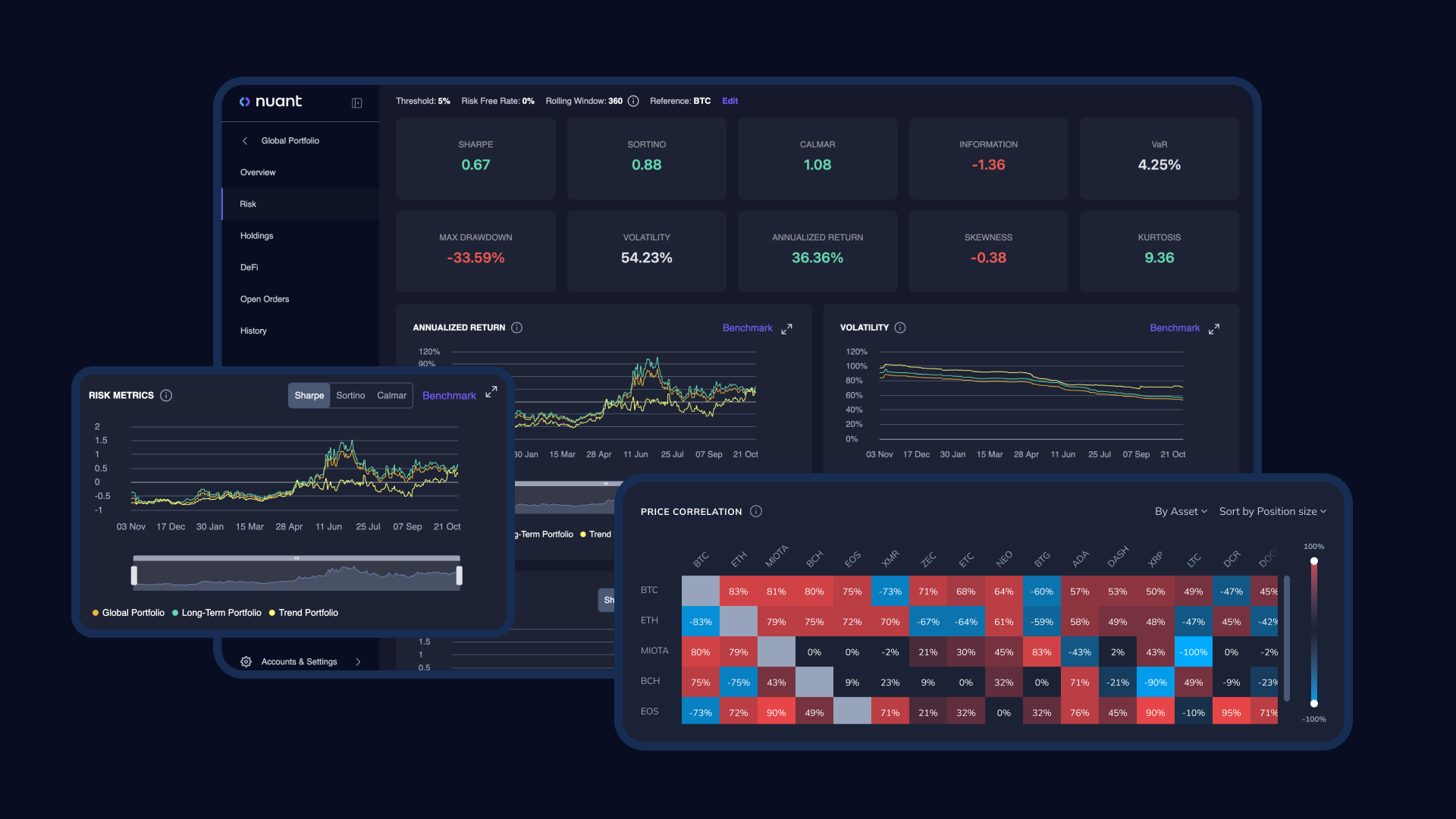
The primary pain point that the Risk Dashboard addresses is the difficulty in easily assessing risk on a digital assets portfolio. Previously, professionals had to rely on multiple tools or perform manual calculations. With the Risk Dashboard, all the essential metrics are automatically calculated and presented in one unified platform. This not only streamlines the process but also ensures accuracy and consistency.
Also, for asset managers versed in traditional finance, our Risk Dashboard seamlessly blends TradFi metrics with the digital assets world, addressing a notable gap in many portfolio management platforms.

- Annualized Return: Evaluate the evolution of your portfolio's annualized performance over time and compare it with other strategies or portfolios.
- Volatility Widget: Identify your portfolio's volatility cycles and determine if its volatility remains consistent or fluctuates during certain periods. Additionally, you can analyze it by Asset or Sector.
- Max Drawdown: Easily determine if you're nearing your global max drawdown or if you're far from it. Analyze it by Asset or Sector as well.

- Risk Metrics: Assess the cyclical behavior of the three ratios (Sharp, Sortino, Calmar) to gauge their evolution. For instance, if your Sharpe ratio is gradually decreasing, it might indicate that luck is playing a more significant role, signaling a need to revisit your strategy.
- Excess Return: Measure your portfolio's performance against your reference over time. Understand by how much you're outperforming the market or vice versa.
- Tracking Error: Evaluate the volatility of the excess return, giving insights into the robustness of performance relative to the reference.
- Price Correlation: Track how closely your portfolio correlates with the price of your reference over time. Analyze it by Asset or Sector as well.

- Beta: Understand the coefficient of your portfolio's performance relative to the reference, shedding light on its acceleration or deceleration compared to the benchmark.
- Information Ratio: Determine whether your portfolio consistently outperforms the benchmark, eliminating the role of luck.
- Upsidedown capture: Evaluate in which direction of the benchmark (upward or downward movement) your portfolio delivers the best performances.
- Price correlation: Assess the diversification and resilience of your portfolio by examining the correlation of all your assets with one another. Analyze by Sector as well and sort it by market size or position size.
In conclusion, Nuant's Risk Dashboard is not just another tool—it's a shift in the way professionals approach risk assessment for digital assets. By offering a comprehensive, customizable, and user-friendly platform, it ensures that digital asset managers are equipped with the best resources to make informed decisions.